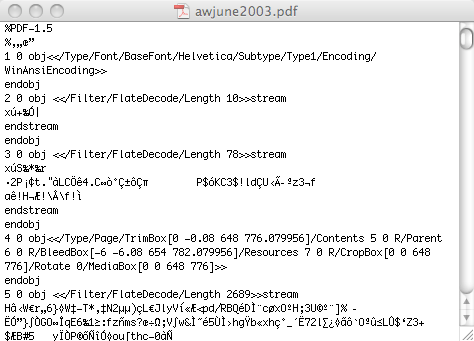People sometimes try to edit a PDF file by opening the file in a text editor. This very rarely works for 3 reasons.
Firstly, a PDF file is effectively a dump of PDF objects. The file contains a reference table giving the exact byte offset locations of each object from the start of the file, and the references tables. If you add or delete a character, or even resave it from an editor which converts line ending from one platform format to another, all these numbers will be incorrect. You would need to update them all. To prove it, just try opening a PDF, type in a space, save it and then see what happens if you try to open it…
Secondly, if you open a PDF file, much of the data is stored inside binary streams, in which data has been encrypted or compressed. If you view a PDF you will see some text but lots of incomprehensive ‘garbage’. This is the binary data. You cannot edit it, but you can easily break it just by adding a character. 
Finally, much of the PDF data needs to be looked at in connection with other data in the file. Text only makes sense by looking at the encoding on the font object, images have their data partly in XObjects and partly in ColorSpace objects, and so forth…
Some files formats such as HTML, Javascript and most source code can be easily manipulated in a text editor. The PDF file format is not one of these and is best accessed using a library which takes away all this complexity. Fortunately there are lots of both free and commercial tools available for all the most popular languages.
But if you want to see how complex it is to edit a PDF file, have a look at our series on How to make your own PDF files manually.
Our software libraries allow you to
| Convert PDF files to HTML |
| Use PDF Forms in a web browser |
| Convert PDF Documents to an image |
| Work with PDF Documents in Java |
| Read and write HEIC and other Image formats in Java |